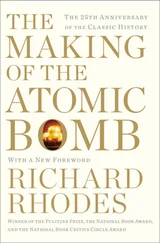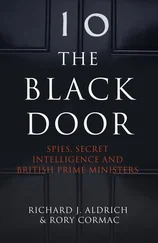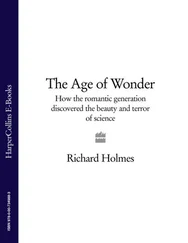1 ...6 7 8 10 11 12 ...18 1 Patient (anatomical) factors ( Chapter 2)Macro – somatic and general patient factorsMini – insertion site anatomyMicro – bone characteristics
2 Mini‐implant design factors ( Chapter 3)Materials and surface characteristicsDimensions
3 Clinical factors ( Chapter 4)Insertion techniqueForce application
On balance, the risk–benefit relationship for mini‐implants appears to be highly favourable for patients with high or atypical anchorage requirements. This means that the consent process (discussed in Chapter 4) should focus on tangible limitations, such as mini‐implant instability and pain, rather than on more theoretical risks of tissue damage.
1 1 Prabhu, J. and Cousley, R.R.J. (2006). Bone anchorage devices in orthodontics. J. Orthod. 33: 288–307.
2 2 Serra, G., Morais, L.S., Elias, C.N. et al. (2008). Sequential bone healing of immediately loaded mini‐implants. Am. J. Orthod. Dentofac. Orthop. 134: 44–52.
3 3 Vannet, B.V., Sabzevar, M.M., Wehrbein, H., and Asscherickx, K. (2007). Osseointegration of miniscrews: a histomorphometric evaluation. Eur. J. Orthod. 29: 437–442.
4 4 Galli, C., Piemontese, M., Ravanetti, F. et al. (2012). Effect of surface treatment on cell responses to grades 4 and 5 titanium for orthodontic mini‐implants. Am. J. Orthod. Dentofac. Orthop. 141: 705–714.
5 5 Malkoc, S., Ozturk, F., Orek, B.C. et al. (2012). Real‐time cell analysis of the cytotoxicity of orthodontic mini‐implants on human gingival fibroblasts and mouse osteoblasts. Am. J. Orthod. Dentofac. Orthop. 141: 419–426.
6 6 Karagkiolidou, A., Ludwig, B., Pazera, P. et al. (2013). Survival of palatal miniscrews used for orthodontic appliance anchorage: a retrospective cohort study. Am. J. Orthod. Dentofac. Orthop. 143: 767–772.
7 7 Jang, W., Choi, Y.J., Hwang, S. et al. (2019). Anchorage loss assessment of the indirect anchor tooth during adjunctive orthodontic treatment. Am. J. Orthod. Dentofac. Orthop. 155: 347–354.
8 8 Monga, N., Kharbanda, O.P., and Samrit, V. (2016). Quantitative and qualitative assessment of anchorage loss during en masse retraction with indirectly loaded miniscrews in patients with bimaxillary protrusion. Am. J. Orthod. Dentofac. Orthop. 150: 274–282.
9 9 Becker, K., Pliska, A., Busch, C. et al. (2018). Efficacy of orthodontic mini implants for en masse retraction in the maxilla: a systematic review and meta‐analysis. Int. J. Implant Dent. 4: 35.
10 10 Ammar, H.H., Ngan, P., Crout, R.J. et al. (2011). Three‐dimensional modelling and finite element analysis in treatment planning for orthodontic tooth movement. Am. J. Orthod. Dentofac. Orthop. 139: e59–e71.
11 11 Kojima, Y., Kawamura, J., and Fukui, H. (2012). Finite element analysis of the effect of force directions on tooth movement in extraction space closure with miniscrew sliding mechanics. Am. J. Orthod. Dentofac. Orthop. 142: 501–508.
12 12 Lai, E.H., Yao, C.J., Chang, J.Z. et al. (2008). Three‐dimensional dental model analysis of treatment outcomes for protrusive maxillary dentition: comparison of headgear, miniscrew, and miniplate skeletal anchorage. Am. J. Orthod. Dentofac. Orthop. 134: 636–645.
13 13 Sung, S.J., Jang, G.W., Chun, Y.S., and Moon, Y.S. (2010). Effective en‐masse retraction design with orthodontic mini‐implant anchorage: a finite element analysis. Am. J. Orthod. Dentofac. Orthop. 137: 648–657.
14 14 Yao, C.J., Lai, E.H., Chang, J.Z. et al. (2008). Comparison of treatment outcomes between skeletal anchorage and extraoral anchorage in adults with maxillary dentoalveolar protrusion. Am. J. Orthod. Dentofac. Orthop. 134: 615–624.
15 15 Al‐Sibaie, S. and Hajeer, M.Y. (2014). Assessment of changes following en‐masse retraction with mini‐implants anchorage compared to two‐step retraction with conventional anchorage in patients with class II division 1 malocclusion: a randomized controlled trial. Eur. J. Orthod. 36: 275–283.
16 16 Alharbi, F., Almuzian, M., and Bearn, D. (2018). Miniscrews failure rate in orthodontics: systematic review and meta‐analysis. Eur. J. Orthod. 40: 519–530.
17 17 Antoszewska, J., Papadopoulos, M.A., Park, H.S., and Ludwig, B. (2009). Five‐year experience with orthodontic miniscrew implants: a retrospective investigation of factors influencing success rates. Am. J. Orthod. Dentofac. Orthop. 136: 158.e1–158e10.
18 18 Berens, A., Wiechmann, D., and Dempf, R. (2006). Mini‐ and micro‐screws for temporary skeletal anchorage in orthodontic therapy. J. Orofac. Orthop. 67: 450–458.
19 19 Chen, Y., Chang, H.H., Lin, H.Y. et al. (2008). Stability of miniplates and miniscrews used for orthodontic anchorage: experience with 492 temporary anchorage devices. Clin. Oral Implants Res. 19: 1188–1196.
20 20 Kim, Y.H., Yang, S., Kim, S. et al. (2010). Midpalatal miniscrews for orthodontic anchorage: factors affecting clinical success. Am. J. Orthod. Dentofac. Orthop. 137: 66–72.
21 21 Lim, H.J., Eun, C.S., Cho, J.H. et al. (2009). Factors associated with initial stability of miniscrews for orthodontic treatment. Am. J. Orthod. Dentofac. Orthop. 136: 236–242.
22 22 Luzi, C., Verna, C., and Melsen, B. (2009). Guidelines for success in placement of orthodontic mini‐implants. J. Clin. Orthod. 43: 39–44.
23 23 Manni, A., Cozzani, M., Tamborrino, F. et al. (2011). Factors influencing the stability of miniscrews. A retrospective study on 300 miniscrews. Eur. J. Orthod. 33: 388–395.
24 24 Moon, C., Lee, D., Lee, H. et al. (2008). Factors associated with the success rate of orthodontic miniscrews placed in the upper and lower posterior buccal region. Angle Orthod. 78: 101–106.
25 25 Moon, C., Park, H., Nam, J. et al. (2010). Relationship between vertical skeletal pattern and success rate of orthodontic mini‐implants. Am. J. Orthod. Dentofac. Orthop. 138: 51–57.
26 26 Park, H., Jeong, S., and Kwon, O. (2006). Factors affecting the clinical success of screw implants used as orthodontic anchorage. Am. J. Orthod. Dentofac. Orthop. 130: 18–25.
27 27 Suzuki, E.Y. and Suzuki, B. (2011). Placement and removal torque values of orthodontic miniscrew implants. Am. J. Orthod. Dentofac. Orthop. 139: 669–678.
28 28 Wu, T., Kuang, S., and Wu, C. (2009). Factors associated with the stability of mini‐implants for orthodontic anchorage: a study of 414 samples in Taiwan. J. Oral Maxillofac. Surg. 67: 1595–1599.
29 29 Melo, A.C.M., Andrighetto, A.R., Hirt, S.D. et al. (2016). Risk factors associated with the failure of miniscrews ‐ a ten‐year cross sectional study. Braz. Oral Res. 30: e124.
30 30 Di Leonardo, B., Ludwig, B., Lisson, J.A. et al. (2018). Insertion torque values and success rates for paramedian insertion of orthodontic miniimplants. J. Orofac. Orthop. 79: 109–115.
31 31 Uribe, F., Mehr, R., Mathur, A. et al. (2015). Failure rates of mini‐implants placed in the infrazygomatic region. Prog. Orthod. 16: 31.
32 32 Uesugi, S., Kokai, S., Kanno, Z., and Ono, T. (2017). Prognosis of primary and secondary insertions of orthodontic miniscrews: what we have learned from 500 implants. Am. J. Orthod. Dentofac. Orthop. 152: 224–231.
33 33 Uesugi, S., Kokai, S., Kanno, Z., and Ono, T. (2018). Stability of secondarily inserted orthodontic miniscrews after failure of the primary insertion for maxillary anchorage: maxillary buccal area vs midpalatal suture area. Am. J. Orthod. Dentofac. Orthop. 153: 54–60.
34 34 Ahmed, K.S., Rooban, T., Krishnaswamy, N.R. et al. (2012). Root damage and repair in patients with temporary skeletal anchorage devices. Am. J. Orthod. Dentofac. Orthop. 141: 547–555.
35 35 Brisceno, C.E., Rossouw, P.E., Carrillo, R. et al. (2009). Healing of the roots and surrounding structures after intentional damage with miniscrew implants. Am. J. Orthod. Dentofac. Orthop. 135: 292–301.
Читать дальше












